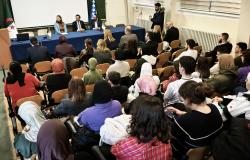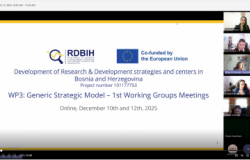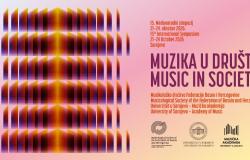The University of Sarajevo records significant scientific results despite the COVID-19 pandemic

Although the UNSA faculties, academies and institutes buildings are silent, teachers and students are collaborating largely through online platforms, thus creating a new form of academic community by moving student shuffling, hectic walking, sounds of musical instruments on online platforms. Classes are running in an altered mode, the media is interested in new ways of imparting knowledge in these extraordinary circumstances of the pandemic, and columns and blogs are filled with student comments on classes. However, an equally important segment of the university's mission is the scientific research work, which is not losing momentum even in these times, which is, it has never stopped, although at first glance it may seem. The numbers speak in favor of development, not the downward trajectory. University teachers and associates in the first quarter achieved enviable results in publishing the research results. If we look at the data in the Scopus index multidisciplinary database, it can be seen that the authors from the University of Sarajevo published 210 scientific papers in the first three months of this year, which represents 43% of the total production of all papers indexed in 2019. In other words, in the first three months of 2020, almost half of the papers from the whole of last year were published. Researchers in the field of technical sciences (131 papers) are leading the publication, followed by researchers in the fields of chemical engineering, medicine, mathematics, biochemistry, agriculture, and the social sciences. When it comes to co-authorship cooperation, joint research with colleagues from Serbia (29 papers) and Croatia, the Czech Republic, France, the United States of America, Austria, Germany, Slovenia and the United Kingdom are leading.
As for the indexing of papers in the Web of Science database, those 68 papers represents a similar dynamics of publication as last year in the same period, and there was no decline. The dynamics of publishing works were maintained despite the extraordinary circumstances. The most represented are works in mathematics, economics, medicine and agronomy.
When it comes to the very topical topic of a pandemic caused by the spread of coronaviruses, it is interesting to single out a paper titled A Novel Cellular Automata Classifier for COVID-19 Prediction by an Indian team of researchers treating indirect trends in the epidemic in India, published in the Journal of Health Studies which, is published by the Faculty of Health Studies, University of Sarajevo. This paper was published on March 29 and downloaded 75 times in the next three days, up to 223 times to date, which is a significant result given the fact that it has attracted the attention of the Bosnian journal in addition to the dominant journals produced by Western European research centers and USA. More at the link: https://www.jhsci.ba/ojs/index.php/jhsci/article/view/907.
The Faculty of Mechanical Engineering of the University of Sarajevo has actively participated in the fight against the spread of coronaviruses. In order to accelerate the production of protective equipment, additional work equipment was procured through the UNDP project "Economic Governance for Growth - EGG", funded by the Government of the Kingdom of Norway. This equipment includes four new 3D printers, filaments and raw material for the production of protective equipment, as well as a machine for testing the mechanical properties of materials. In this way, the Faculty of Mechanical Engineering became involved in the production of protective equipment. They have started to produce protective visors, and they can also work with masks and respirator bindings, if the need arises. Although it will primarily use the equipment to produce protective visors in the context of the COVID-19 pandemic, it will, after the crisis, equip the Laboratory for Testing Polymeric Materials for teaching, research, innovation and development. You can find more at the link: https://mef.unsa.ba/en/news/60.
When it comes to interdisciplinarity, neither is lacking in these circumstances; it is interesting to note the cooperation of our archaeologists and geneticists. Namely, the Institute for Genetic Engineering and Biotechnology (INGEB) of the University of Sarajevo has published the results of the latest archeogenetic analyzes of the Visoko site that give a whole new picture of the groups that inhabited these areas in prehistoric times. Our geneticists have achieved great scientific success as they are successful isolation and analysis of biological material up to 2,500 years old (from the 4th century BC). You can read more about this research at: http://www.federalna.ba/bhs/vijest/313953/otkrice-bh-scientist.
In the midst of a pandemic, the Faculty of Agriculture and Food has become a member of the international consortium H2020 project called SMARTWATER - Promoting SMART agricultural WATER management in BiH, which will be implemented over the next two years under the leadership of the University of Banja Luka. The project will create a number of different joint activities that promote networking, joint research experiments, research collaboration and knowledge sharing between experts in specific fields. All activities will be in line with the national research strategy with the inclusion of smart technologies (cloud-based and remote sensing) in water management in agriculture, optimization of water-energy-food relations and climate change, and adaptation measures.
The purpose of this review is to give us an insight into the new university life and to open up a space for presenting our activities and contributions to scientific, artistic and other creativity within the community in which we operate.








